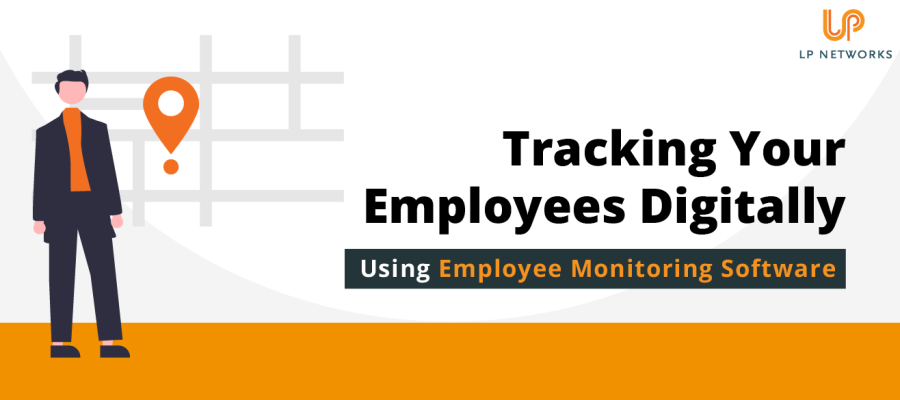- Solutions For
Specialist IT Support Services for:
- Popular Services
- Security
Security
- Our Expertise
Our Full Range of IT Services
- Learn
- About Us
- Contact
Posted 20th March 2023

The pandemic changed many things for small businesses. One such item was that companies needed to adapt how, when and where their employees worked. As a result, remote and hybrid working is now seen as the norm in many sectors.
Indeed, recent statistics show that around 20% of businesses operate entirely remotely, but 35% don't allow employees to work at home.
Whilst there are benefits, there are also challenges to this new working environment. Some employers are concerned about the risks to productivity for employees who work from home. Therefore, the rise in the hybrid work model has led to an increase in employee monitoring tools. Understandably, some of these tools have received mixed reviews from employees.
Employee monitoring software can track the digital movements of an employee, including things like clocking in and out software, keyboard activity, mouse activity, and details of websites visited, through to programs that take screenshots of an employee's computers every ten minutes. The information is typically sent to the company in a daily or weekly report.
Some tools can even track the sounds and video of the employee. There are options for the tracking to be visible or non-visible to the employee – it very much depends on the software used and the employer's ethics.
Whilst this type of monitoring can benefit an organisation that may be worried about a lack of productivity in their employees, it's important to note that it can also alienate good employees and reduce morale.
Here are some of the current employee monitoring programs in use in the UK:
Employers must comply with relevant legislation and regulations; employee monitoring tools are legal in the UK. In particular, the General Data Protection Regulation (GDPR) and the Data Protection Act 2018 set out the legal framework for processing personal data, including data collected through employee monitoring tools.
Employers must ensure they have a lawful basis for collecting and processing employee data, such as obtaining explicit consent, fulfilling a contractual obligation, or pursuing a legitimate interest. Employers must also provide employees with clear and transparent information about what data is collected, how the company will use it, and how long it will retain it.
Additionally, employers must ensure that monitoring activities are proportionate and do not infringe on employees' privacy rights. For example, employers should only collect data relevant to the legitimate purpose of monitoring and avoid collecting data on an intrusive or excessive scale.
It is always essential for employers to ensure that they comply with the relevant legislation and take steps to protect employees' privacy rights.
The Tools Can Help Managers Understand How Employees Spend Their Day
Many tracking tools can track employees' time by the project they are working on. Of course, this can help senior management understand how employees manage their time, which can help with ROI projections.
The Tools Reduce Non-Work Activities During Working Hours
Many employers – whether they admit it or not – are worried about whether remote employees are wasting time. These systems can help reduce non-work activities because the employees know they are being tracked.
It Can Be an Easy Way to Track Time for Remote Workers
Tracking tools can be convenient for small businesses working with remote teams, as employees can easily track their time.
They Can Dent Employees' Morale and Productivity
When monitoring is implemented, many employees feel watched and spied upon, and morale can plummet. They can become nervous about what the tools will show, even if they are a conscientious employee. Some employees can feel hurt and betrayed, and feel they are being accused of not being trustworthy.
Activity Monitoring Doesn't Equal Productivity
Many tracking tools send employees and employers "activity reports", but they look at keyboard and mouse activity during a specific time. However, only some taks that employees work on require using the keyboard. What if they must make a call, take a video call or use a pen and paper to work something out? The activity report doesn't include this information; therefore, it's only sometimes an accurate picture of employee productivity.
Implementing the Tools Could Cost Organisations Good Employees
Employers implementing such monitoring tools can quickly alienate good employees who will likely feel unappreciated. Relegating valued employees to the number of keystrokes they make per day also restricts creativity.
Why You Need to Find a Balance
When it comes to implementing monitoring tools, think about whether you really do need to track activity in this way. If you do, do you need to treat all employees the same? Also, ask your employees for their views on tracking.
You may not necessarily need to use employee monitoring tools. There are many ways to ensure that employees work effectively and efficiently without using monitoring tools. Some of these include:
Monitoring tools could be an important part of your business, but you should use them thoughtfully. Get in touch to find out more about using monitoring and productivity tools in your business.

